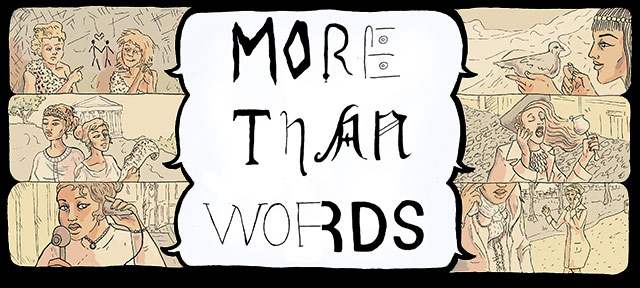
feature image credit Maria Gvedashvili
The first time I ever heard the word “tomboy” I was probably eight years old. I’d been hanging out with my two sisters and three cousins, the six of us split down familiar lines — the two boys and me on one side, playing something, probably an amped-up version of Horse featuring alien subplots, and the other three girls on the other, playing something else, something I found extremely boring. Later, at dinner with our parents, seven-year-old Robbie related a recent conflict around a mouthful of hamburger: “My friend was making fun of me for playing with Cara. But I told him it was ok, because she’s a tomboy.”
I remember the parents exchanging glances that telegraphed a fear I’d had for a while — that something I had suspected about myself, but couldn’t pinpoint, was both noticeable and somehow concerning. But this fear was quickly subsumed by the glow of having found a word that fit me. It was the first time that had happened, and it became a barometer for jolts of future self-recognition. I was a tomboy the same way I’d later be queer. I didn’t yet know I was joining a really complicated history — I was just glad I could call myself something in my head. Of course, the history is complicated. But that’s what this column is for.
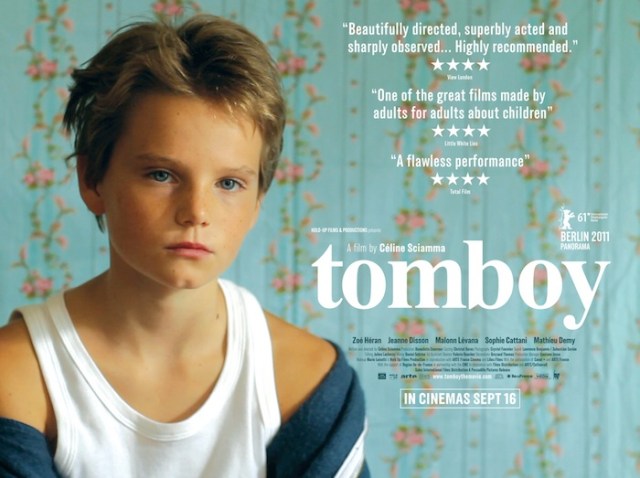
Thomas is an old, popular, and easily shortened name. Like others of its type, it has lent its first syllable to many descriptive nouns and catchalls over the years. According to the Ayto Dictionary of Word Origins, when used as a prefix, “tom… was often used to indicate maleness and male aggression” (see: tom turkey, tomcat, tomatillo). And when first affixed to “boy,” it meant the same thing: it denoted a more boisterous and rude boy, a more stereotypical boy, the boyest boy of all — “tomboy” as “boy squared”. This usage first popped up in 1553 — when someone asked someone else “is all your delite and joy in whiskying and romping abroad like a Tom boy?” — and was possibly also related to its contemporaries “tom-fool” (a buffoon) and “tomfoolery.”

About fifteen years later, in 1579, the word “tomboy” made a perplexing and murkily understood gender-leap, and began meaning “a bold or immodest woman.” Although it kept its new gender associations, its overall definition quickly got its old spirit back. By the time it appeared in print in 1592, it was “connected with connotations of rudeness and impropriety.” Based on example citations from the Oxford English Dictionary, it was also connected with an outright disregard for gravity — tomboys, when they sat still long enough to be described, were pinned as “wild and romping,” “ramping, frolicsome, and rude,” and (my personal favorite) “a girle or wench who leaps up and down like a boy.” This definition, though common in England, didn’t make its way to America until the mid-nineteen century — the closest analogue on that side of the ocean was “hoyden,” which had classist undertones and was more blatantly insulting.
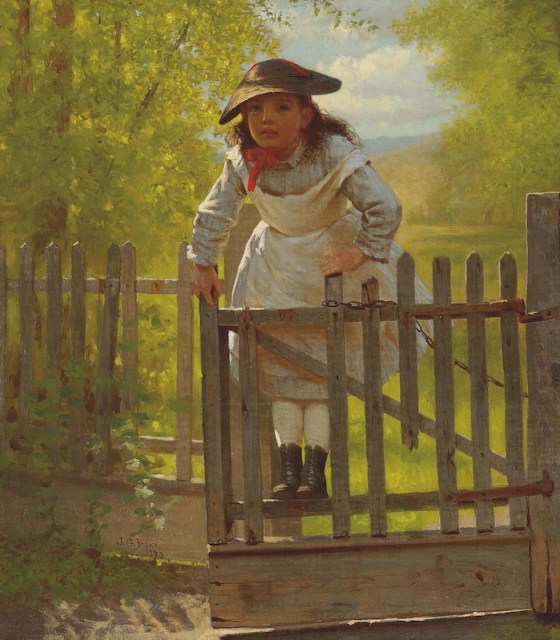
But one person’s (or culture’s, or time period’s) troublesome, rude wannabe astronaut is another’s hip new ideal woman, and by the time American English picked up on “tomboy,” its surrounding constellation of ideas had spun totally around. In Tomboys: A Literary and Cultural History, Michelle Ann Abate examines how the tomboy proved an enduring archetype, gaining prominence in the mid-nineteenth century “as a product of growing concerns over the deplorable health of upper- and middle-class white women,” and remaining relevant through changing times by shifting with and reflecting them. “By the end of the First World War,” Abate explains, “women were voting, engaging in such formerly masculine activities as smoking and drinking, and even asserting their right to participate in the “male” world of work… compared to women only a generation before them, the entire sex had been tomboy-ified.”
All of a sudden, people couldn’t get enough of the word — there were movies about tomboys, stage shows about tomboys, and awesome swing tunes called “Tomboy” that were huge hits in 1934 (alright, there was only one of those, but you should listen to it, because it’s cute and full of marimba). In the 1880s, characters like Little Women‘s Jo March and A Country Doctor‘s Nan Prince got the tomboy stamp by putting their careers ahead of (or firmly adjacent to) their domestic lives. By 1915, the female inhabitants of Charlotte Perkins Gilman’s Herland were strong and athletic, but got that way only by doing aerobics — echoing the progressive era’s emphasis on properly gendered exercise. Clara Bow, a silent film star in the 1920s, turned a childhood spent “playing baseball in the evening in the streets with the boys” like “a rough, strong little tomboy” into a career spent epitomizing a related archetype — that of the flapper, that “somewhat paradoxical combination of adolescent tomboyish androgyny and adult feminine sexuality.”
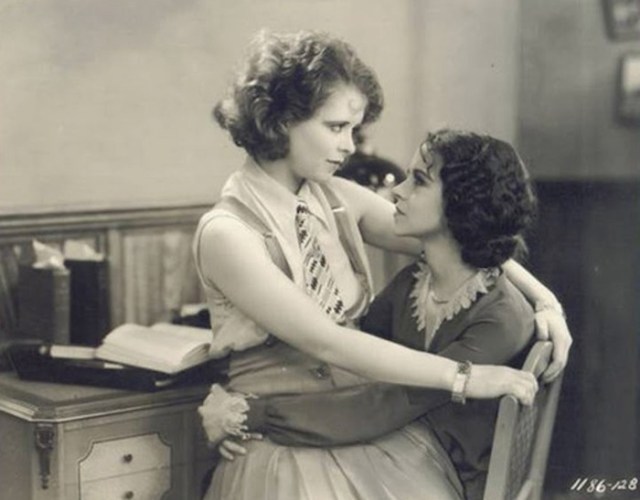
This shifting quality, of course, makes a definition hard to pin down. But there’s one trend that all these historical tomboys have had in common — society thinks they’re supposed to grow up. In 1992, three researchers, seeking to connect the dots between childhood tomboyism and “adult androgyny and masculinity,” created a “12-point tomboyism index” that included such items as “engaging in loud or boisterous play with others” and “participating in traditionally male sports.” They found that “tomboyism was common and generally declined at puberty due to social pressure.” This social pressure has been writ large in tomboy narratives forever — Charlotte Perkins Gilman called tomboys “the most normal girl… a healthy young creature, who is human through and through; not feminine till it is time to be.” Scout Finch’s aunt moves in with her brother so that Scout can get “some feminine influence.” Laura Ingalls Wilder gets made fun of playing catch at school. Jo March marries that random professor guy.
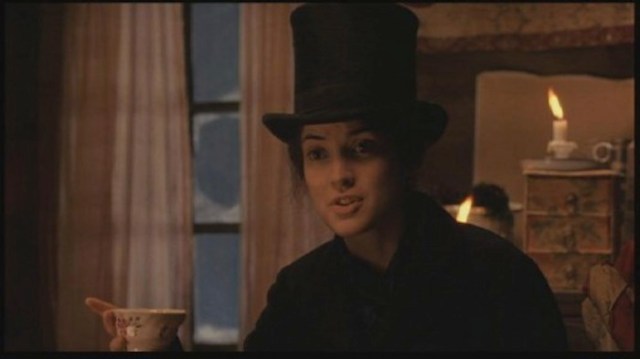
A trend emerges: tomboyism is only alright until it starts getting in the way of marriage and motherhood and all those other more historically established duties. In her piece last week on Ellen Page and Ellen Degeneres, Riese points out that although “research has shown that tomboyism isn’t a strong predictor for homosexuality,” a connection between the two “was endorsed by popular medicine and science until a few decades ago… So, a lot of tomboys learn early on that the way you dress alarms people because it means you might be this other thing.” Thus — despite the idiocy of Shiloh Panic, despite gender identity and sexuality being totally separate things, despite the fact that it shouldn’t matter anyway — that glance of recognition between all those adults at that picnic table when I was eight.
And thus, I think, the current reclamation of the word “tomboy” I see going on among queer women. Lynne Yamaguchi and Karen Barber — editors of Tomboys! Tales of Dyke Derring-Do, a collection of essays and stories by lesbians about their tomboyhoods — “identify a strong connection for their contributors between their tomboy and lesbian identities… arguing that tomboyhood is more than a phase for many lesbians, and seems to remain part of the foundation of who we are as adults, maybe because both tomboys and lesbians are transgressing society’s gender barriers and not doing what ‘normal’ women do.” There’s a whole tomboy aesthetic out there, defined by Blake of queerplusfashion as, again, narratively transgressive — “a continuation of that phase that was supposed to end before high school; the refusal to conform to the looming beauty standards that are thrust on young girls.” Keeping that tomboy identity past when you’re supposed to ease out of it is another way of writing your own story, of carving out a new space for yourself.
![[VIA WILDFANG]](https://www.autostraddle.com/wp-content/uploads/2014/02/wildfang_tomboy.jpg?resize=640%2C360)
This has been the thirty-first installment of More Than Words, where I take queer words of all sorts and smash them apart and see what makes them tick. Every week I dissect a different word, trying to figure out where it came from, how it has evolved, where it might be going, and what it all means. It’s like reading the dictionary through a prism. Feel free to send word suggestions to [email protected].
Header by Rory Midhani








Comments
That was really interesting!
(This is a feelings driven ramble that I felt compelled to post even though it’s all merpderp, I have flu-Apologies)
Really interesting. Such a fascinating area of etymological gender wibbly wobblyness and then the gender binary badness situation leading to complicated feelings about reclamation of the word. Also as a kid I was terrified of being called a tomboy by anyone…I didn’t want to be identified as other, I guess because I knew I was.
“tomboyism is only alright until it starts getting in the way of marriage and motherhood and all those other more historically established duties”.
This sums up my relationship with my childhood heroines pretty perfectly. Although not strictly a tomboy, I was a bit of a radical feminist as a child and remember the pain I felt when Laura married Almanzo and became a house wife and when George (fantastic five) was forced to do the dishes with Anne just because she was a girl. As a protest against this prevailing attitude in society, I almost didn’t do any house work for years..
Yes to the George situation! I recalled it often when visiting family/friends in Italy and being made to clear the table while the menfolk sat drinking coffee and brandy.
“I WAS JUST KIDDING ABOUT TOMATILLOS, BY THE WAY”
but I always thought tomatillos were hyper masculine tomato type thingies??
I remember adults describing me as a “tomboy”, usually in a slightly apologetic tone in an attempt to explain WHY I wasn’t acting like girls are “supposed” to act. I don’t remember ever hearing it from other kids – only adults trying to explain what they apparently thought was weird behaviour.
I remember that my being a “tomboy” was tolerated until I was about 10, and then it suddenly became unacceptable for me to wear boys’ clothes and run around with the boys in my class. First the adults and then other kids in my life started policing my behaviour much more in a bid to make me more “ladylike” – or, a “normal girl”. I didn’t understand at the time why it had suddenly become an issue, but in retrospect I think it was definitely a case of people being afraid that tomboys grow into queer women if you don’t stop them. Needless to say, that didn’t work.
Yes! So much empathy. I have an aunt who bought me a skirt for my 10th birthday for this exact reason. She laughed at my horrified face. The normal girl pressure was palpable from her.
Omg i know EXACTLY how that feels and it was right around that age too. It was like stop playing with your boy cousins all the time. In my mind, Barbies and doll houses we BOOOORING.
Fascinating. Thanks for this! It’s always interesting to think of these words and concepts in ways you don’t normally, and I never even thought to consider the etymological roots of it.
I embraced being called a tomboy when I was a kid, because that’s what I was. I embrace being called a tomboy now, because that’s what I am. It’s interesting, because aside from some nagging from my mother about having to put more care into my presentation, the most negativity came from my peers who occasionally found me ‘weird’ for preferring to play Power Ranger Make Believe than play House.
I also had more negativity from my peers as a kid, though that might have been because my mom isn’t the most traditionally feminine person either. It might also have been that adults were simply more restrained/filtered with a kid than other kids were. Most adults, even queerphobic ones, don’t shout “lesbo” at a seven year-old, or claim that a nine year-old secretly has a penis and threaten to check.
My mom did get on my case a lot about minor grooming issues of gender conformity during puberty – it seemed like one of the few aspects of gender roles that she cared about enforcing. She was annoyed that I didn’t regularly shave, and insisted that I bleach the hair on my upper lip (which I hated doing and stopped once I went to college).
I used to think being called a tomboy was something to be proud of? Maybe ’cause my best friends growing up were such tomboys with their short hair cuts and getting to wear shorts or jeans everyday that when people could see my tomboyishness through the long hair and dresses I was forced to wear I was happy. But I grew up in the middle of no where and being super girly wasn’t an easy thing to do anyways.
Also when I was little, my cousins would play house or school or something and I HATED it. So I’d always just say I wouldn’t play unless I could be the dog. My cousin ALWAYS had my back on that, even when her friends said “there’s no dog in school!”
I love this, and dogs are absolutely appropriate in every situation. (My alternative in the traditional games was always to “make” — figure out a reason to build, craft, assemble something cool as my role in the thing.)
cara this is so good and i’m so excited that it’s your 100th post, it feels really perfect!
when i was little i was SO proud of being a tomboy and felt really glowy and flattered whenever it was used to describe me.
i’m a hundred years old! i hadn’t even noticed!
i was also very proud of being called a tomboy, especially as it wasn’t often recognized (i was not very boisterous). when someone figured it out it always felt like they *really knew me*.
My mom likes to remind me about what a cute tomboy I was-always climbing trees in a dress, catching and releasing spiders instead of squashing them-and I totally have the exact same reaction!
It makes me really happy when people see those different aspects of myself that are rolled up into the term “tomboy.” Growing up it always seemed like such an accomplishment to be a quirky, independent tomboy, so even now I take a lot of pride in it. A lot of my idols were tomboys – Jo March, George from Nancy Drew (have an adorable pixie cut AND be able to kick ass with some sweet judo skills??)
Thank you for writing this. Absolutely love. :)
These need to be a book soon. Best thing on the internet. Thank you!
I first heard the word tomboy in the 3rd grade and for some reason i remember being very irritated at it but i made no effort to change the clothes i wore (jeans and shirt and sneakers) into something which would be deemed more feminine. I remember loving basketball and my sisters bf at the time told me that all the girls in the WNBA are tomboys and i would end up the same way.
I think i finally came to terms with the word in high school and started acknowledging myself as one.
In the Philippines, tomboy means lesbian and often butch. The feminine lesbian isn’t a lesbian but just a straight woman in a relationship with a tomboy. Although sometimes, especially with the younger generation who’s more exposed to western culture, regardless if you’re androgynous, butch, femme or whatever, tomboy has been reclaimed.
Other Filipino terms that have emerged from the word “tomboy” that mean lesbian are “tibo”, “tibam” and “t-bird”.
Hey fellow Filipino=) You know I have to agree with what you’re saying. I think sometimes that we should have a group to educate the people on what the terms mean. I think that in some places we have a tendency to look at things in the black and white you know? If you’re not this then you’re that, there’s no gray area.
I was hoping someone would bring this up. I think it’s fascinating how a word developed in English has been appropriated in a similar way with ultimately different meanings in other cultures.
Cara, maybe make a Part II for this?
This is fascinating, Cara!
Right now, I’m reading “Fried Green Tomatoes At The Whistle Stop Cafe” and Idgie is now my favorite tomboy person ever. Also, did y’all know this book is hella gay. Like I can’t believe my eyes. So much gay subtext.
Have you seen the film?
Idgie Threadgoode is my spirit animal.
love this! and i totally geeked out when I saw you quoting Abate, because i got to read her for a paper i wrote a couple years ago. what was the paper about, you ask? ok, i’ll tell you. it’s about e.d.e.n. southworth’s The Hidden Hand, which is a book about a swashbuckling 19th-century girl who is poor and then rich and has a lady to defend. that novel btw is super queer even if Abate says it’s not.
I remember being told on the playground when I was around 6 or 7 that power rangers was “just for boys” in response to me wanting to play with some boys in my class. One of those boys is now in prison for jacking cars so I guess we all know who the real winner is.
“Tom” without the boy addition, was also used in the mid-19th century to early 20th or so as a word for a butch lesbian. Femme lesbians were just Sapphists.
This Julia Swanson quote is particularly interesting to me – “there’s a paradox in thinking that you’re better than other girls, when your whole reason for feeling that way is because you think your gender is so inherently inferior that you want to dis-identify with being a girl altogether.”
This is, as I’m starting to transition from F to M or at least from F to “halfway in between” one of my sticking points, and one of the things I can’t quite get across to my therapist, who is very set on the gender binary, even though she’s a therapist specifically for gender identity issues.
I don’t think that there is anything wrong with being feminine or female. It doesn’t happen to fit me entirely, but I’m not willing to completely shed a feminine identity. I don’t really want to let go of some of the parts of me that are feminine that I’m comfortable with, although I want to make some definite changes to my body. My therapist seems intent on me being on one side or other, as does, unfortunately, my wife.
I’d prefer making a middle path. I want to take hormones, I want to have top surgery. But I don’t plan to keep facial hair, I don’t plan to cut my hair short. I plan on dressing like a dandy – masculine with a feminine flair. I’m having such trouble articulating this (although I can see exactly in my minds eye what I would look like) that I’ve resorted to pinterest and pinning pictures of my particular look.
So far I’m not having much luck conveying what I want, and good luck finding a therapist that understands gender queer in the midwest.
Yes that quote stuck out to me as well. I often think that this idea of such a constricting bianary has frought much heartache on those that straddle it. If this country were more excepting of the masculine-of-central woman or feminine-of-central man I think there would be less need to go to extreme measures in terms of hormone therapy and surgery. Of course these are amazings alternatives to those that know they need them to feel whole. But the point is no one can know that except the person who lives in that particular mind and body. To be subjected to a forced bianary gender position by those closest to you seems incredibly frustrating.
I know that my partner grew up as and still is quite the tomboy. She is in so many ways “butch”. But some of the feminine things that exist about her I thoroughly enjoy in contrast, and as an incling into the understandstanding of the layered complication and beauty that is a whole person.
I hope you find the support you need. There should never be a need to fit yourself into what makes someone else comfortable. I can’t imagine that being a road to happiness. Even if you gave to find a therapist that will Scype with you, I’m sure it’s worth finding the right one, and perhaps they can help your partner better understand you as well.
loved this article. Julia Swanson’s blog articulates my experience exactly. I have been trying to put my tomboy feelings into words for years…
I was a very classic “tomboy” growing up. Idgie style. I would venture to say that if I had had some idea of tumblr gender stuff, I’d even classify my identity, my gender, as “tomboy” when I was birth-14. The knees of my jeans were always ripped, scrapes everywhere, barefoot always, hanging off of things, always ALWAYS outside, very hyper and daring and independent, no-nonsense, hated the idea of marriage and boys and being held back and stuff. Really wanted to chop off my hair (my conservative, traditional parents were NOT about it, shaved it out of rebellion at 12) I held tightly to “tomboy” and wore the title proudly. I REALLY wanted to join Boy Scouts. If I’d been born ten years later, I bet somebody would’ve thought I was a trans kid. My mom was the exact same way, one of the first girls in America allowed to play Little League, and played baseball with the boys through high school. Keeps her hair short and her wardrobe looks like a lumberjack’s.
But now, as an adult, I dislike the idea that girls who do “typical boy” activities, like “typical boy” things, have to be classified differently, labeled. Playing outside and turning up one’s nose to dolls and pink is perfectly feminine. Wearing dirty-kneed jeans and a t-shirt with a dinosaur on it is perfectly feminine. Playing baseball is perfectly feminine. Dressing like a lumberjack? Feminine. Because a girl is doing it, wearing it, etc.
And I think believing anything else is harmful to little girls. It keeps them in a box and others them. I don’t think being a rough and tumble kid says anything about that kid besides being a rough and tumble kid. Says nothing about their gender, their sexuality, etc. It doesn’t need a special label because a girl is doing it.
Ok so i don’t have the link because I’m on my phone ugh BUT there was an amazing article about the stupid pink girls lego by the girl who was in the 1980 something something lego advert and it says so much of this! Worth a Google. :)
The lego article is pretty much fiction, though. Lego had gender-normative themed sets in 1981, and still has gender-neutral brick sets in 2014. And a lot of those “stupid pink girls lego” sets are mostly teal. The box is purple. The ninja turtles box is a darker purple. Clearly ninja turtles are girl legos.
I think you might need to do some reading about how stupid and problematic the “Lego Friends” sets are, and how Legos leaves out girls via its representation in minifigs and advertising in/of its non-“Lego Friends” sets. Also, it’s not necessarily the color scheme of the Lego Friends sets that are the problem, although that’s part of it. It’s what you’re supposed to make with those legos, it’s the fact that they have to separate those legos from the “normal” legos, it’s the advertising, it’s everything. That article isn’t “fiction” and you’ve got to be SERIOUSLY ignorant to think so.
Actually, a lot of toy advertising back in the 80’s when that Lego ad was published was very inclusive, and before that, too. It’s actually worsened over the years.
I suggest reading the blogs Princess Free Zone and then referring to all the resources they suggest. You’ve got some serious learning to do.
I was a complete tomboy as a kid, I was almost always mistaken for a boy and I would throw a huge fit if I was forced to wear a dress (still do). I always hated pink and would protest anything typically “girly” and sometimes even wanted to be called a boy. I rejected everything feminine whenever possible.
I sort of got more feminine in middle school and high school, I started at least wearing clothes from the women’s section anyway. That didn’t last long though, Junior year I came out and started dressing how I’ve always wanted to. I actually embraced some things that are considered feminine, once I figured out femininity was not a bad thing. I adore musicals, I’m incredibly picky about my hair, I love fashion, I like colorful pretty underwear, I cry a lot. But I dress exclusively in “men’s” clothes. Embracing feminism and all things girly really helped me grow as a person, while still dressing like I do.
I wonder what 8 year old me would think of me now.
Basically I’m trying to say this is a great article, thank you for writing it
Great article, Cara! And I really dig those quotes from Julia Swanson you included.
I first heard the term “marimacha” when I was around 6. Some of my family members used it to describe me. I didn’t know what it meant at the time of course.
I hated when my mom fixed my hair, I hated wearing dresses. There’s even a picture of me and my teacher, I’m all dressed up and I just have the most “i hate this” look on my face.
The way I saw it, I was just a kid playing with a bunch of other kids and we were having fun.
I have one of those pictures, so does my missus!
I never identified as a tomboy so much as I identified as a girl who liked to play soccer. I always said, “I can be a GIRL and like this too!” So that’s what I did.
Also, Jo March has always been my girl. <3 I also identified with Mulan, Pocahontas, Joan of Arc, Artemis. I've always related to the chicks who weren't afraid to either do a little gender bending or get a little muddy.
thank you so much for this article. you put that light bulb over my head and turned it on.
i was always a tomboy as a kid, choosing button-down shirts and pants over a dress any day, as soon as i was old enough to pick my outfits. dressing as i pleased allowed me to do what i wanted- to run around, play sports, get all scuffed up with the boys. then society’s pressures finally took over my mind, and i had that middle school through college phase where i thought i had to present (objectify) myself in a way to attract guys. how wrong i was about so many things. now i’ve finally found a way back to my younger self and am accepting, all over again, that this really is me. if only i had realized for the last thirteen years that my 7- and 8-year-old self knew me way better than i gave her credit for.
thanks again for bringing this to my attention. it has helped me to make one more step towards breaking down boundaries that have been built up by pressures and expectations around me, and fully accepting and loving who i am.
Great post on the history of tomboys. What happens to tomboys when they grow up or “age” out? Where are the straight tomboys? Where are the senior tomboys? Why is it so hard to hold onto being a tomboy once you are out of your childhood?
I’m a middle-aged tomboy; I’ve spent all of my adult life identifying as queer/butch and trying to suppress my trans*ness. Recently, I’ve been letting my boy out, and finding that it is a huge relief to reclaim that part of myself.
It is where a lot of my joy and playfulness is located. Thanks again.
The other day, I asked my girlfriend if my wearing “masculine” clothing could be an expression of my femininity, she said yes. Wearing clothes that happen to come from the men’s department is what makes me feel like the girl I am.
When I was younger my mom used to tell me that I should wear more girl clothes, and I would exasperatedly explain to her that because I was a girl, the clothes I was wearing *were* girl clothes.
Just found this, and your comment to my blog post, now, several years later! Interesting well-written article (except my name is Julie Swanson, not Julia). Hope you are doing well….